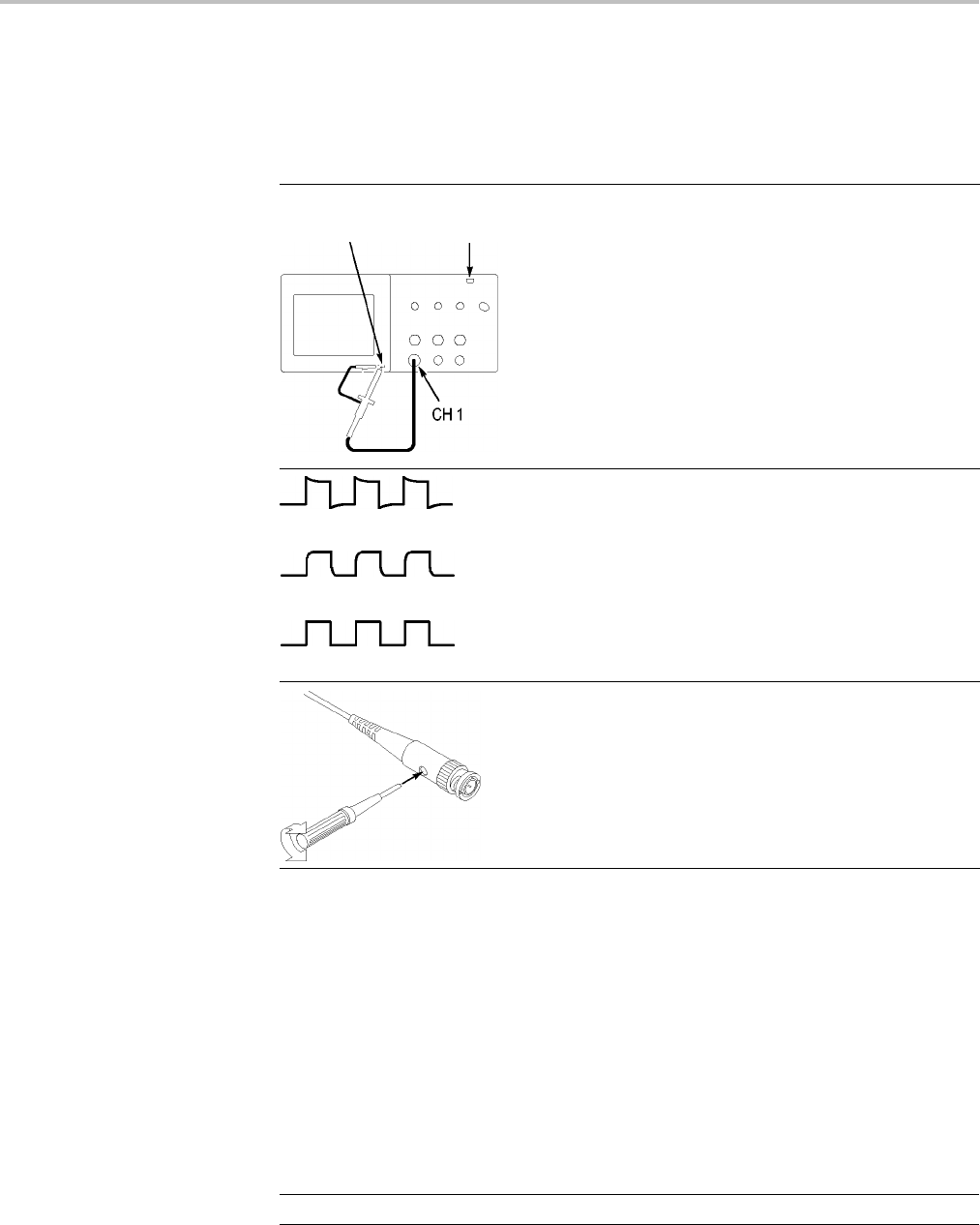User manual
Table Of Contents
- toc
- General safety summary
- Compliance Information
- Preface
- Getting Started
- Operating Basics
- Understanding Oscilloscope Functions
- Application Examples
- Taking Simple Measurements
- Using Autorange to Examine a Series of Test Points
- Taking Cursor Measurements
- Analyzing Signal Detail
- Capturing a Single-Shot Signal
- Measuring Propagation Delay
- Triggering on a Specific Pulse Width
- Triggering on a Video Signal
- Analyzing a Differential Communication Signal
- Viewing Impedance Changes in a Network
- Data Logging
- Limit Testing
- Math FFT
- USB Flash Drive and Device Ports
- USB Flash Drive Port
- File Management Conventions
- Saving and Recalling Files With a USB Flash Drive
- Using the Save Function of the Print Front Panel Button
- USB Device Port
- Installing the PC Communications Software on a PC
- Connecting to a PC
- Connecting to a GPIB System
- Command Entry
- Connecting to a Printer
- Printing a Screen Image
- Reference
- Appendix A: Specifications
- Appendix B: TPP0101 and TPP0201 Series 10X Passive Probes Inform
- Appendix C: Accessories
- Appendix D: Cleaning
- Appendix E: Default Setup
- Appendix F: Font Licenses

Getting Started
Manual Probe C
ompensation
As an alternative m ethod to the Probe Check Wizard, you can manually perform
this adjustment to match your p robe to the input channel.
PROBE COMP AutoSet
button
1. Push the 1 ► Probe ► Voltage ►
Attenuation option and select 10X. Connect
the TPP0101/TPP0201 probe to channel 1 o n
the oscilloscope. If you use the probe hook-tip,
ensure a proper connection by firmly inser ting the
tip onto the probe.
2. AttachtheprobetiptothePROBECOMP
~5V@1kHz terminal and the reference lead to
the PROBE COMP chassis terminal. Display the
channel, and then push the AutoSet button.
Overcompensated
Undercompensated
Compensated correctly
3. Check the shape of the displayed waveform.
4. If necessary, adjust your probe.
Repeat as necessary.
Prob
e Attenuation Setting
Probes are available with various attenuation factors which affect the vertical
scale of the signal. The Probe Check Wizard verifies that the attenuation factor
in
the oscilloscope matches the probe.
As an alternative m ethod to Probe Check, you can manually select the factor
th
at matches the attenuation of your probe. For example, to match a probe set
to10XconnectedtoCH1,pushthe1 ► Probe ► Voltage ► Attenuation
option, and select 10X.
NOTE. The default setting for the Attenuation option is 10X.
TBS1000 Series Oscilloscopes User Manual 7










